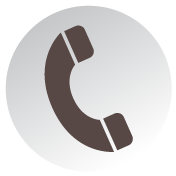When it comes to orthodontic appliances, short-term discomfort after having your braces on may be common. This makes it difficult to know when you’re experiencing a true dental emergency.
Brackets can come undone and wires can poke at your gums. This can be irritating and uncomfortable and may require a visit to avoid further disruption to your treatment. Here are some issues to look out for, how you may be able to remedy the situation on your own, and when a true dental emergency has occurred.
Self-Care
Depending on your current source of irritation or discomfort, there may be something you can do to remedy the situation or provide relief until your next appointment. When it comes to dealing with orthodontic appliances at home, it’s important to be familiar with all parts of orthodontic appliances to identify the issue and determine if something is damaged or in need of reinserted.
The better you understand what’s wrong with your appliance, the less likely you are to upset your existing treatment plan or damage something that may be costly to repair.
Soreness:
After the initial installment of braces and future adjustments, it’s normal to feel a bit sore all around the mouth and find biting and chewing uncomfortable. This limitation can last up to five days, and recovery can be assisted along with painkillers commonly used for headaches and migraines.
As part of regular oral hygiene, it’s recommended to rinse with a solution of salt water. A teaspoon of table salt added to 8 ounces of warm water makes for a solution known to alleviate tenderness.
In the case of irritation to the tongue, cheeks, or lips, wax applied to the braces can lessen friction. This makes it easier to get used to the texture of braces with less irritation.
Comfort can only come after many hours of wearing your appliance properly. If you’ve exceeded the prescribed hours and pain or discomfort persists it may be time to schedule an appointment.
Loose Bracket:
If examining your headgear revels loose brackets or band, it’s best to keep leave it alone and wax the surrounding areas and consult our office. In the event a bracket or wire is completely out of place, wrap it in a napkin and bring it in to your next appointment if asked.
Loose Wire:
If you find that a wire has come loose, you may be able to place it where it belongs with a pair of tweezers. And once done, reapply wax to lessen irritation. But if this doesn’t solve the problem, attach the loose wire to the tooth behind where it was first placed.
In the case of a wire that is poking at you, it might be possible to push it down. A pencil eraser is a useful tool in this instance because it is both soft and sturdy. Pushing a poking wire down into place and applying wax may solve this problem.


